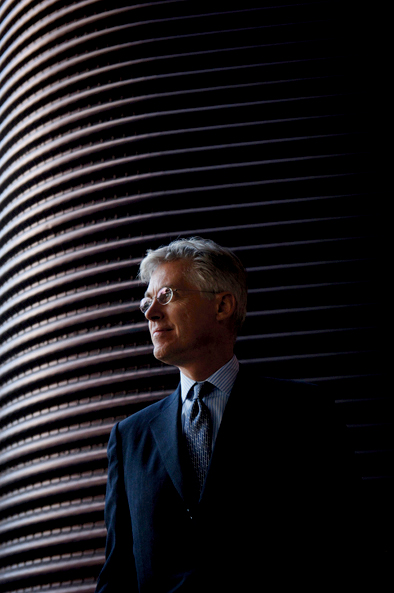
Can you describe the origins and evolution of TEFAF/Maastricht?
In 1975 a number of the world’s leading Old Masters dealers, such as Johnny van Haeften of London and the late Robert Noortman of Maastricht, believed there was a critical need for a major fair run by dealers. They established the Pictura fair which evolved into the European Fine Art Fair (or TEFAF/Maastricht Foundation), and their model of a dealer-run fair has thrived. The fair began with 28 dealers in 1975. Last year, there were 227. To give you an idea of attendance, in 1989 there were 17,000 visitors to the fair. We recorded 73,406 last year.
Collectors, curators, and dealers around the world eagerly await the annual art market report published by the foundation. Can you tell us something about the forthcoming report?
This year’s report, Globalization and the Art Market: Emerging Economies and the Art Trade in 2008, will include a chapter dedicated to the recent downturn. The report has been prepared by Clare McAndrew, a cultural economist specializing in the fine and decorative art market who is editor of the financial quarterly magazine Wealth. Her findings are based on an extensive international survey of dealers in addition to information from auction houses and other databases.
How have you helped steer TEFAF away from its strictly Old Masters image to reflect the current interest in twentieth-century works?
We listened carefully to what people were saying and the feedback we received indicated a need to strengthen the area of design. We decided to launch a separate twentieth-century design division of ten dealers as well as a special exhibition re-creating some of the interiors of the Jachthuis Sint Hubertus (known as Country Residence/Museum Jachthuis Sint Hubertus), near Otterlo and once owned by the Kröller-Müller family, the famous Dutch collectors. Now a museum, the house and its furniture were designed about 1915 to 1920 by the renowned Dutch architect Hendrik Petrus Berlage, who is considered the father of modern architecture in the Netherlands. His theories inspired the leaders of the de Stijl movement and others. Since the museum has never loaned examples before, this should be an exciting event.
In 2007 you initiated TEFAF Showcase, where a small group of younger dealers were featured. What prompted that decision?
I thought it was a pity that we didn’t offer a platform for the next generation of dealers-people who have been in the business for less than ten years yet have enormous depth. This year we will have the New York dealer Alastair Crawford with vintage and contemporary Georg Jensen silver; also from New York is Jason Jacques with art nouveau, japoniste, and Secessionist ceramics; Katie Jones of London with contemporary Japanese design; and Flo Peters of Hamburg with twentieth-century black-and-white photography, among others. Their participation keeps the fair vibrant.
I’ve noticed that in your London gallery you now show some contemporary work in addition to the Asian antiques that you are known for. Why that shift in emphasis?
It partly stems from my own interest in contemporary art. I’ve found over the years that people live with modern things alongside those they buy from me and that inspired me to suggest the combination to more clients. Above all, the new work we show speaks for itself. We’ve exhibited work by the young British artist Lucien Taylor, whose silver vessels are sometimes inspired by Chinese shapes and forms, as well as photographs by the American Sheila Rock, whose images of India and of Tibetan monks are remarkable.
How is the field of Chinese antiquities changing in terms of locating material and rising values?
The overriding change is that people are more concerned about provenance now. Such confirmation of authenticity for later works-those dating after the fourteenth century-is critical as there is a huge industry producing fakes in China. It can be very difficult to identify copies, so I will only buy pieces with demonstrated provenances. When it comes to value, later works in jade have risen beyond anyone’s wildest dreams in the past twenty years.
What do you collect?
I don’t live with a lot. I collect glass, paintings, and sculpture. My taste is minimalist, and I tend to favor geometric designs. A number of my paintings are by the British artist Terry Haggerty, whose work plays tricks on your eye somewhat like Bridget Riley’s. I have several glass vases by the British artist Anna Dickinson, and sculpture by the German artist Julia Mangold, who creates minimalist wall sculptures of metal boxes.
